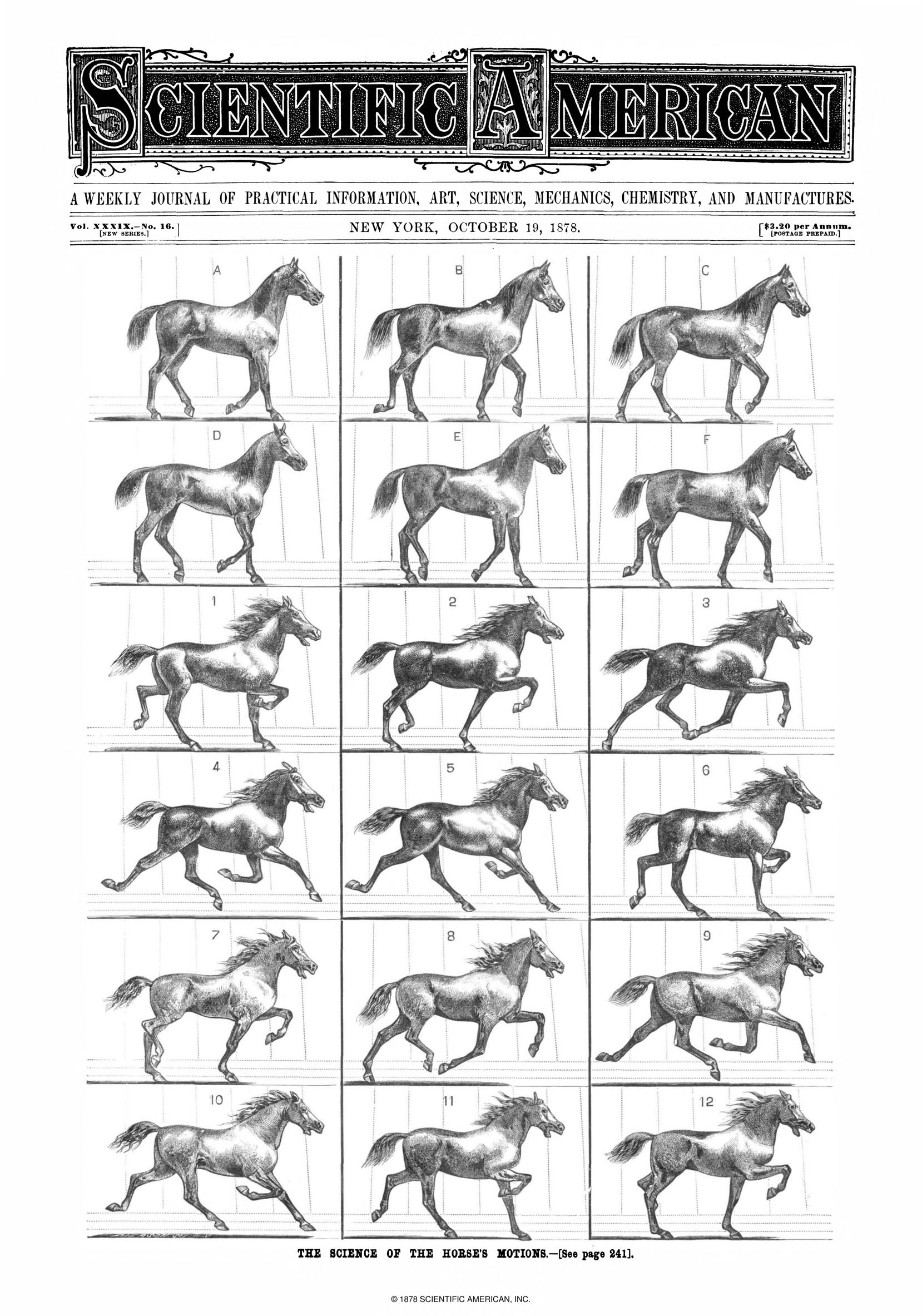Other Firsts: Movie Making
Science Informs Art
Things at the limit of human senses are hard for our minds to grasp. This has led to many scientific "discoveries" that were never real. It's also led artists to show things in rapid motion incorrectly.
Look for paintings of lightning from the days before photography. Usually, they'll be a straight bright line, or the stereotypical zigzag still used as a popular symbol for lightning.
The same is true for horses in motion: running was often depicted with the horse in the air, front and back legs both outstretched. To modern eyes used to photography (especially slow-motion video), it looks like the horse was so surprised it leaped straight up, and is about to crash down to the ground. But then, that's what artists thought was right, or at least would "feel" to the viewer like rapid motion.
In the late 1800's, Eadweard Muybridge developed his own system to take a series of cameras, each with very fast shutters and sensitive film, to take a series of photographs of animals (and people) in motion. He developed a series of electric triggers to open the shutter of each camera. He also developed the Zoopraxiscope, "...the first apparatus ever used, or constructed, for synthetically demonstrating movements analytically photographed from life...".[*]Eadweard Muybridge, Animals in Motion. Now, movies and videos are common, and most people can make them using things they use every day.
These images, published in the October 19, 1878 edition of Scientific American, show engravings of the horse "Abe Eddington" walking and trotting, based on photographs[*]"These - omitting the driver and his sulky - we have had enlarged and skillfully engraved, as shown in the illustration on the first page.... The limit of our space forbids any attempt to follow the movements and positions of the four feet throughout the stride, further than to note that the figures from 1 to 6 depict half a stride, the remaining figures the other half." exposed for 1/2000 of a second.
"If Art is the interpreter of nature, as is claimed, she is false to her mission when she wilfully persists in perpetuating a falsehood."
-- Eadweard Muybridge, The Horse in Motion, p. 102
This image is in the public domain: it is taken from the October 19, 1878 edition of Scientific American, without edits.
